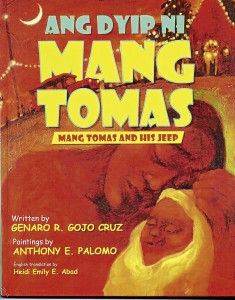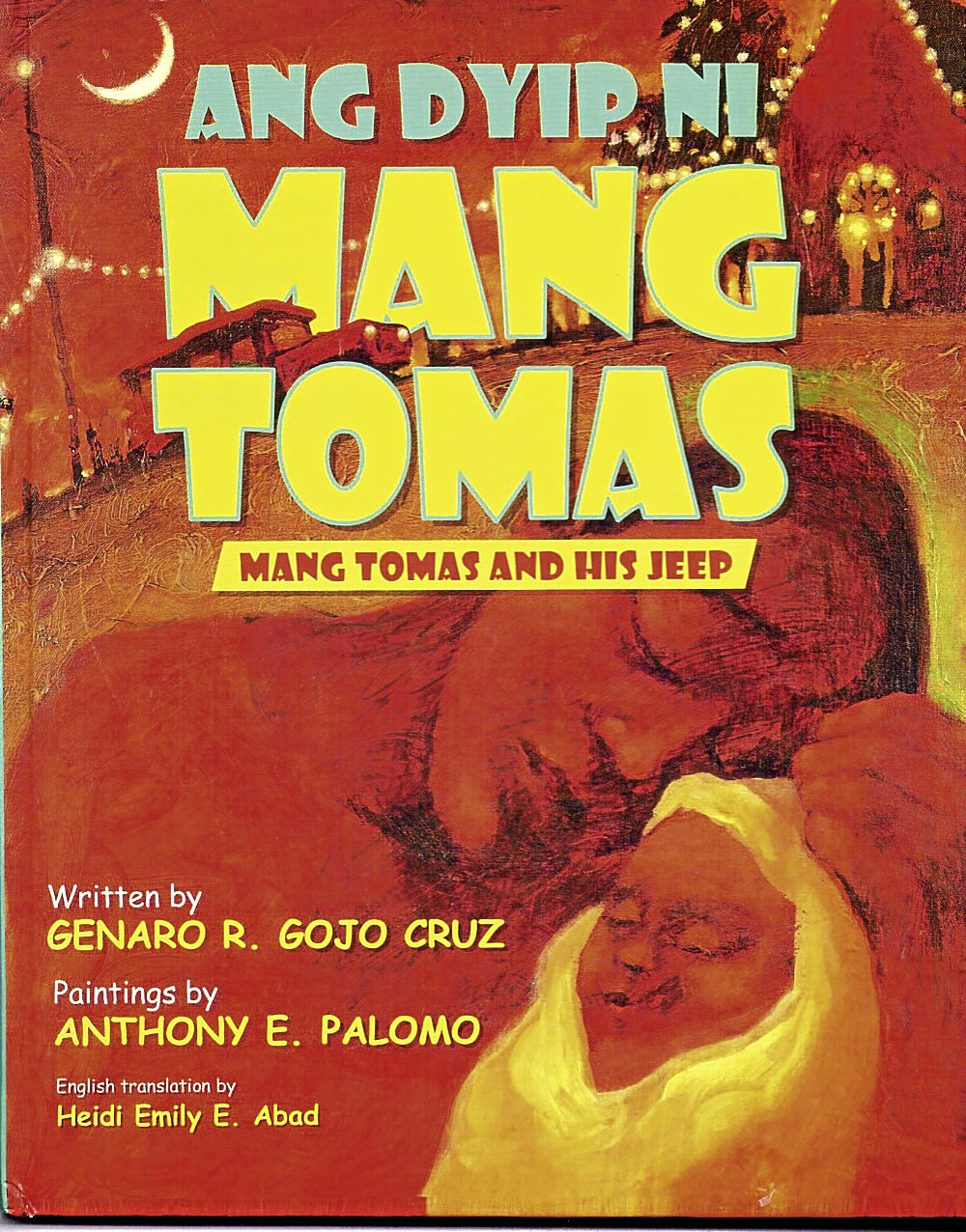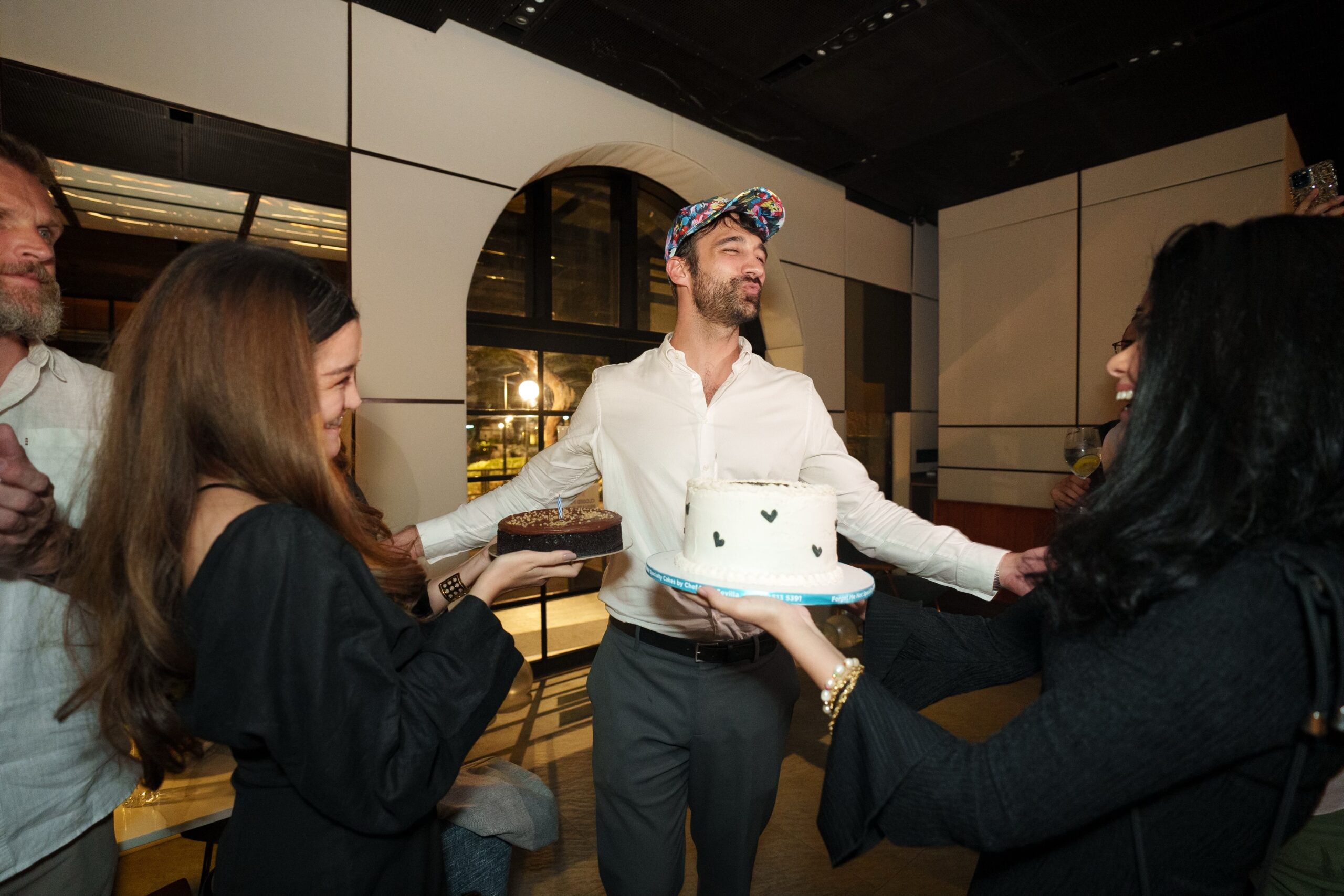 The book “Ang Dyip ni Mang Tomas” (Mang Tomas and His Jeep), written in Tagalog by Genaro R. Gojo Cruz, with English translation by Heidi Emily E. Abad and paintings by Anthony E. Palomo (Canvas and the University of Santo Tomas Publishing House, 2009) is not a new release. But it is worth revisiting since at the Ayala Town Center, 10 huge billboards feature the text and the lovely illustrations of the book.
The book “Ang Dyip ni Mang Tomas” (Mang Tomas and His Jeep), written in Tagalog by Genaro R. Gojo Cruz, with English translation by Heidi Emily E. Abad and paintings by Anthony E. Palomo (Canvas and the University of Santo Tomas Publishing House, 2009) is not a new release. But it is worth revisiting since at the Ayala Town Center, 10 huge billboards feature the text and the lovely illustrations of the book.
The display is a partnership between Canvas and MasterCard.
The display seems a major marketing coup for a Philippine children’s book. Malls aren’t anymore dominated solely by western storybook characters.
Rereading the story now, I am reminded it is actually a Christmas story, with the boy narrator discovering the poignant circumstances surrounding his Dec. 16 birthday. His father, Mang Tomas, whose jeepney was the first one to ply the streets of Barangay Pastol, is legendary in the community. The vehicle has witnessed all the departures and returns of the townfolk, “the hearty laughter of friends meeting again after a long while,” and “the cries of families left behind by those working abroad.”
The jeepney embodies the harmonious marriage of the narrator’s parents since it was their wedding car. They also use it to attend Sunday Mass. The jeepney makes Mang Tomas earn money with which to send his kids to school. It hasn’t figured in any mishap and many people attribute special powers to it. Truly the jeepney is the family’s lucky charm.
The narrator finds out why from Mang Tomas himself. On the first Christman dawn Mass many years ago, Mang Tomassaid he heard the cry of a baby. “It was the cry of a newborn that I heard that early morning,” he tells his son. The infant’s mom had die due to birth complications. The infant turns out to be the narrator.
The narrator now wants to develop the same pride Mang Tomas has toward his work and his jeepney. The narrator pretends to be maneuvering the steering wheel, feeling he has travelled miles, with his father holding his hand and his mother hugging him. “It was a warm and secure feeling. It felt very safe,” the narrator says.
It should have ended there, but it goes on for an unnecessary didactic final sentence, “I knew that I would always be guided in every path I choose to take.”
There are many noteworthy facets of this book. The Canvas tagline is “Real Life Told Beautifully,” and it really produces the handsomest children’s books in the local market. The stories are products of a competition in which contestants have to make a story out of a painting by an emerging artist. The painting then becomes part of a suite of paintings to illustrate the winning story.
Each title is produced initially in a hardbound edition with stunning full-color illustrations. The art is impressive and deserving of the exhibits Canvas mounts for every book, more recently at the Ayala Museum’s ArtistSpace. Because of the quality of design and printing, you could describe them of coffee-table quality. But I have yet to read a Canvas book that is lighthearted and not dark and brooding.
“Mang Tomas and His Jeep” has some light and humorous moments. The jeepney is described as handsome and Mang Tomas asks, “Where else would it get its good looks but from us?”
The description of Mang Tomas as the ideal driver cannot but make one smile. Yes, an ideal driver hereabouts who does not blare his horn unnecessarily nor too loudly, who does not brake suddenly, one for whom passenger safety is valued. This would make for a valuable discussion in class or at home on road and traffic safety.
Because this book’s major appeal is its art, the artworks originally rendered in acrylic on canvas by Anthony E. Palomo make every page of the book deserving of close scrutiny and even as a starting point for many of the young readers’ own stories. It is intriguing that the book has two covers—on the actual book and another on the book jacket. How lucky we are to be able to enjoy both.
The design and layout of the inside pages is commendable because the original Filipino text and the English translation flow with the narration and do not cause any jarring nor awkward transitions for the reader. Each has its own font type, with the translation in italics.
And even before the Web went on a free download frenzy, Canvas was already inviting readers to enjoy its offering of free downloads of the nine books it has published so far. The invitation still holds at www.canvas.ph/downloads.htm
E-mail the author at [email protected].









































